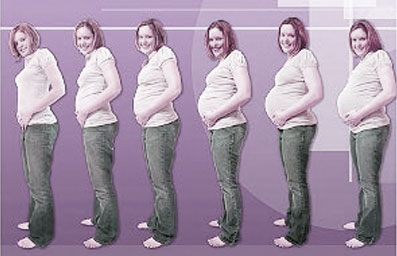Pregnancy Week 2

If you are pregnant and at what you think is 2 weeks, this begins one week after the start of your last menstrual period. Your last period is finished now and the hormones estrogen and progesterone are causing your uterus to build a new layer of endometrium (your uterine lining) to prepare for your soon-to-be-conceived baby. This lining thickens and becomes engorged with blood, ready to receive, cushion and nourish your baby. At the same time, one of your ovaries is growing and ripening an egg, in preparation for ovulation.
This is the most fertile time of your cycle and is the optimum time to make love every day or every-other day to help maximize your chances of becoming pregnant, since your body is almost ready for ovulation and an egg will very soon travel down your fallopian tube to meet up with your partner’s sperm.
If you are using an ovulation prediction kit, this may be when you should start testing. Ovulation tests work by detecting the surge in luteinizing hormone (LH), which your pituitary gland releases just before ovulation. There are two main ovulation test varieties; one that measures LH in your saliva and one that measures LH in your urine. Be sure to read and follow the directions carefully.
By the end of this week you may feel some cramping, particularly on one side of your abdomen, signaling, that you are ovulating. The pain typically radiates from whichever ovary is ovulating. This is called mittelschmerz (MITT-ul-shmurz) and is fairly common, although not all women feel ovulatory pains.
Slight spotting is also not uncommon during this time. In addition to these symptoms of impending ovulation, you may notice your cervical mucus increasing and becoming more and more slippery and stretchy, because of higher estrogen levels. This will help your partner’s sperm penetrate your cervix on their way to meet your egg.



